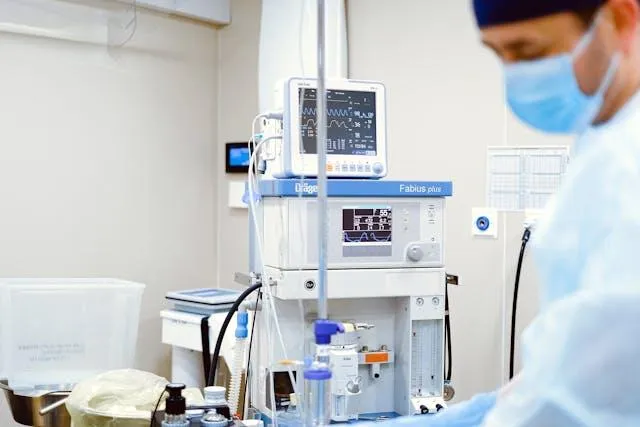
New Regulations to Strengthen Medical Device Patient Safety
Introduction
In a significant development aimed at enhancing patient safety, the Australian Government has introduced new regulations mandating that all public, private, and day hospitals report medical device-related injuries or suspected injuries to the Therapeutic Goods Administration (TGA). Effective from 21 March 2026, this mandatory reporting initiative seeks to improve the identification and management of device-related safety concerns, facilitating a more proactive approach to patient safety.
Background
Previously, the responsibility for reporting adverse events involving medical devices primarily rested with manufacturers and sponsors. This approach left gaps in the detection of long-term safety issues, as healthcare facilities were often the first to observe such events. A Senate Inquiry highlighted that critical safety signals were sometimes undetected, delaying responses to emerging risks and increasing the potential for patient harm.
To address these concerns, the Australian Government amended the Therapeutic Goods Act in March 2023, mandating that all Australian public, private, and day hospitals report medical device-related adverse events to the TGA. This change is supported by amendments to the Therapeutic Goods (Medical Devices) Regulations 2002, which came into effect in March 2025, outlining the reporting requirements.
Key Components of the New Regulations
1. Mandatory Reporting by Healthcare Facilities
From 21 March 2026, all Australian healthcare facilities are required to report medical device-related adverse events to the TGA. This includes public hospitals, private hospitals, and day hospital facilities. The Chief Executive Officer (or equivalent) of each healthcare facility holds the responsibility for ensuring compliance with these reporting requirements. Failure to comply may result in civil penalties.
2. Reporting Requirements
Healthcare facilities must report adverse events that involve medical devices, including:
Injuries or suspected injuries caused by a medical device
Near misses or incidents that could have resulted in harm
These reports should be submitted to the TGA through the Adverse Signal Detection and Event Reporting (ASDER) system, which is designed to accept and manage hospital adverse event reports under the new mandatory reporting requirements.
3. Implementation Timeline
A voluntary reporting period commenced in March 2025, allowing healthcare facilities to build their reporting capability. From 21 March 2026, reporting by healthcare facilities will become mandatory. This phased approach aims to ensure that facilities are adequately prepared to meet the new requirements.
4. Data Management and Analysis
Reports submitted by healthcare facilities through the ASDER system are used for safety signal detection purposes. These reports are not added to the Database of Adverse Event Notifications (DAEN), which is a publicly accessible database. Instead, the data is analyzed to identify trends and potential safety concerns, enabling the TGA to take timely and appropriate regulatory action.
5. Registration and Onboarding
Healthcare facilities and central reporting bodies must be registered in the ASDER system before reports can be submitted. Between July and November 2025, all healthcare facilities or centralized reporting locations will be contacted and registered to ASDER. Any healthcare facility not onboarded by 14 November 2025 should contact the TGA at MDST@health.gov.au.
Benefits of Mandatory Reporting
1. Enhanced Signal Detection
By incorporating data from healthcare facilities, the TGA can identify emerging safety issues more rapidly. This comprehensive data collection enhances the ability to detect potential problems early, allowing for quicker intervention and mitigation of risks.
2. Improved Patient Safety
The new regulations facilitate a more proactive approach to patient safety by ensuring that adverse events are reported and addressed promptly. This proactive stance helps in minimizing the impact of device-related issues on patient health and well-being.
3. Alignment with International Practices
The mandatory reporting requirements align Australia's practices with international standards, promoting consistency and collaboration in the global effort to enhance medical device safety. This alignment also supports the harmonization of regulatory practices, benefiting both healthcare providers and patients.
Challenges and Considerations
1. Resource Allocation
Implementing the new reporting requirements may necessitate additional resources and training for healthcare facilities. Ensuring that staff are adequately prepared to meet the reporting obligations is crucial for the success of the initiative.
2. Data Privacy and Security
The collection and analysis of adverse event data must be conducted in compliance with privacy and data protection regulations. Healthcare facilities must ensure that patient information is handled securely and confidentially throughout the reporting process.
3. Integration with Existing Systems
Healthcare facilities may need to integrate the ASDER system with existing reporting and incident management systems. Seamless integration is essential to streamline the reporting process and avoid duplication of efforts.
Conclusion
The introduction of mandatory reporting requirements for medical device-related adverse events marks a significant step forward in enhancing patient safety in Australia. By ensuring that healthcare facilities report such events to the TGA, the new regulations facilitate a more comprehensive and proactive approach to identifying and addressing device-related safety concerns. While challenges exist, the benefits of improved signal detection, patient safety, and alignment with international practices underscore the importance of these regulatory changes.
As the implementation date approaches, healthcare facilities must prepare to meet the new reporting obligations. By doing so, they contribute to a safer healthcare environment and support the ongoing efforts to improve the safety and performance of medical devices in Australia.